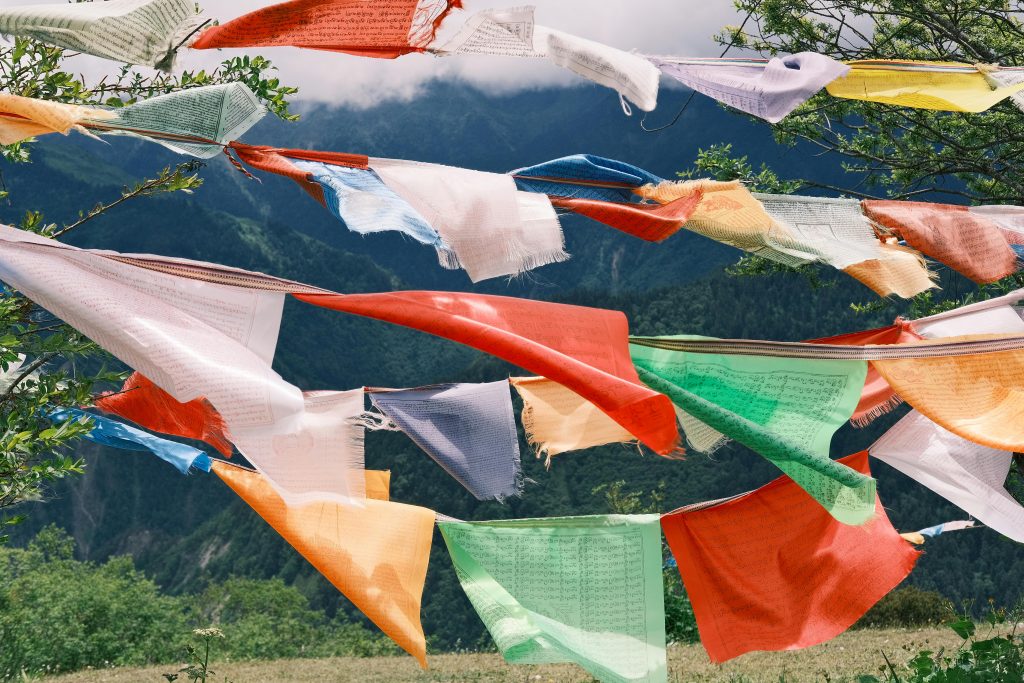
Introduction to Nepal Prayer Flags
Nepal prayer flags are one of the most iconic symbols of spiritual culture in Nepal. These colorful flags, traditionally found fluttering in the Himalayas, are believed to bring peace, good fortune, and harmony to those who hang them. For centuries, Nepal prayer flags have been used by monks, locals, and travelers to invoke blessings and positive energy. Understanding their significance provides insight into the spiritual practices that have endured in Nepal for generations.
History of Nepal Prayer Flags
Nepal prayer flags have a rich history that dates back thousands of years. Originally influenced by Buddhist traditions, these flags were used to promote compassion, wisdom, and strength. Over time, the use of Nepal prayer flags spread to various communities across the Himalayan region. Each flag is printed with sacred mantras and symbols, which are believed to transmit spiritual vibrations into the environment. This long-standing tradition has made Nepal prayer flags a universal symbol of peace and hope.
Design and Symbolism of Nepal Prayer Flags
Nepal prayer flags are traditionally made in five colors, each representing an element: blue for sky, white for air, red for fire, green for water, and yellow for earth. When hung together, these flags symbolize balance and harmony in nature. The mantras and symbols printed on Nepal prayer flags carry deep spiritual meanings. The wind is believed to carry the prayers from the flags, spreading blessings and positive energy to all beings.
Types of Nepal Prayer Flags
There are mainly two types of Nepal prayer flags: Lungta (horizontal flags) and Darchor (vertical flags). Lungta flags are often strung along mountain ridges, rooftops, or sacred spaces, while Darchor flags are more permanent installations used in temples or monasteries. Both types serve the same purpose of spreading spiritual energy and invoking good fortune. Choosing the right type of Nepal prayer flags depends on the intention and the space where they will be displayed.
Spiritual Significance of Nepal Prayer Flags
Nepal prayer flags are not just decorative items—they carry profound spiritual significance. Hanging these flags is believed to promote peace, harmony, and well-being. The prayers and mantras inscribed on Nepal prayer flags are intended to benefit all living beings. When the wind blows through the flags, it is said to carry the positive energy and blessings into the surroundings. This makes Nepal prayer flags a powerful tool for meditation, mindfulness, and spiritual growth.
How Nepal Prayer Flags Bring Peace
The primary purpose of Nepal prayer flags is to bring peace. By displaying these flags in homes, temples, or outdoor spaces, individuals invite tranquility and calmness into their environment. The visual presence of Nepal prayer flags, along with the sacred inscriptions, serves as a constant reminder to cultivate compassion and patience. Additionally, the gentle fluttering of these flags in the wind creates a soothing ambiance that enhances relaxation and mental clarity.
How Nepal Prayer Flags Attract Good Fortune
In addition to peace, Nepal prayer flags are believed to attract good fortune. The mantras written on each flag are specifically chosen to promote prosperity, health, and happiness. When installed in auspicious locations, Nepal prayer flags can help manifest positive outcomes in personal and professional life. Travelers and spiritual seekers often carry small sets of Nepal prayer flags to invite blessings wherever they go. The act of hanging these flags itself is a form of merit-making, which is an essential practice in Buddhist tradition.
Where to Hang Nepal Prayer Flags
The placement of Nepal prayer flags is important for their effectiveness. They are traditionally hung in high places such as rooftops, trees, or mountain passes to allow the wind to carry their blessings. Indoors, Nepal prayer flags can be placed near meditation spaces or windows to maintain a connection with natural elements. The key is to hang them with respect and intention, ensuring that their spiritual energy is preserved and shared with all beings.
Caring for Your Nepal Prayer Flags
Nepal prayer flags require minimal care, but proper handling ensures they remain effective. Over time, flags may fade or fray, which is considered a natural part of their spiritual cycle. Old or worn-out flags can be replaced, and it is customary to dispose of them respectfully. This cycle of renewal symbolizes the impermanence of life and the continuous flow of blessings. Properly cared for, Nepal prayer flags continue to inspire peace, protection, and good fortune for many years.
Modern Use of Nepal Prayer Flags
Today, Nepal prayer flags have gained global popularity. People around the world use them for spiritual practice, home decoration, and as symbols of positivity. Despite their modern use, the traditional beliefs surrounding Nepal prayer flags remain intact. They continue to serve as reminders of mindfulness, compassion, and the interconnectedness of all life. Incorporating Nepal prayer flags into everyday life allows individuals to stay connected with ancient wisdom while enhancing the energy of their surroundings.
Conclusion
Nepal prayer flags are much more than colorful pieces of cloth—they are carriers of peace, blessings, and good fortune. From their ancient origins to modern use, they continue to inspire spiritual growth and harmony. Hanging Nepal prayer flags in your space invites positive energy, promotes mindfulness, and reminds you of the timeless power of prayer. By embracing this sacred tradition, anyone can experience the profound benefits of Nepal prayer flags and contribute to a more peaceful and fortunate life.



